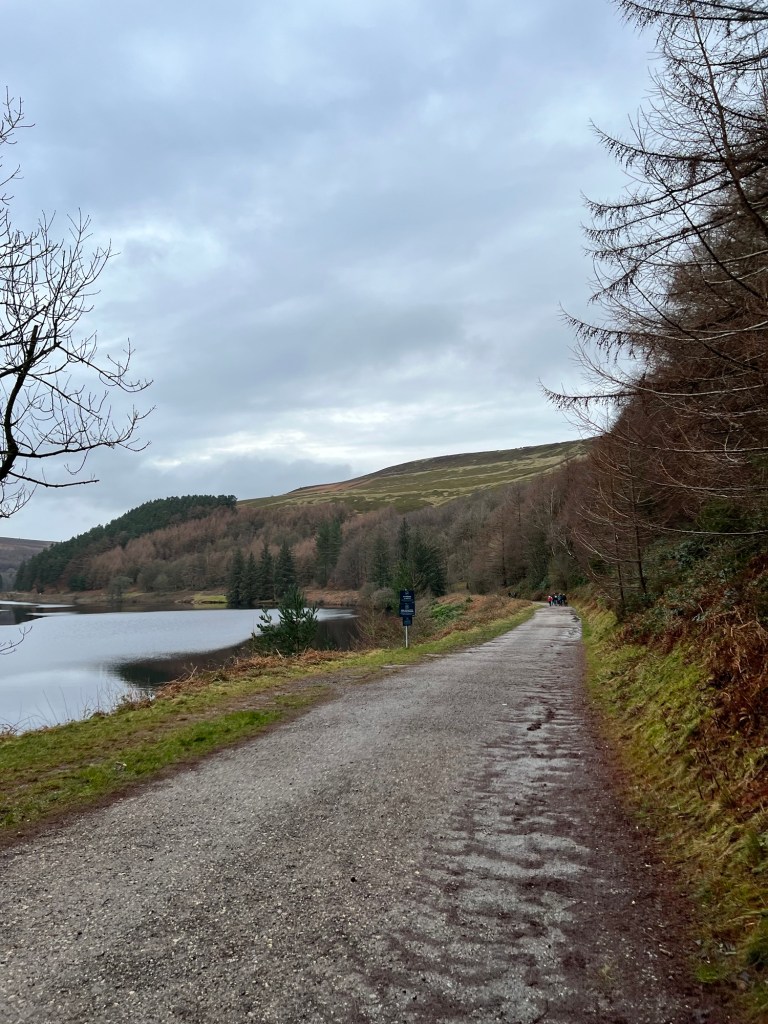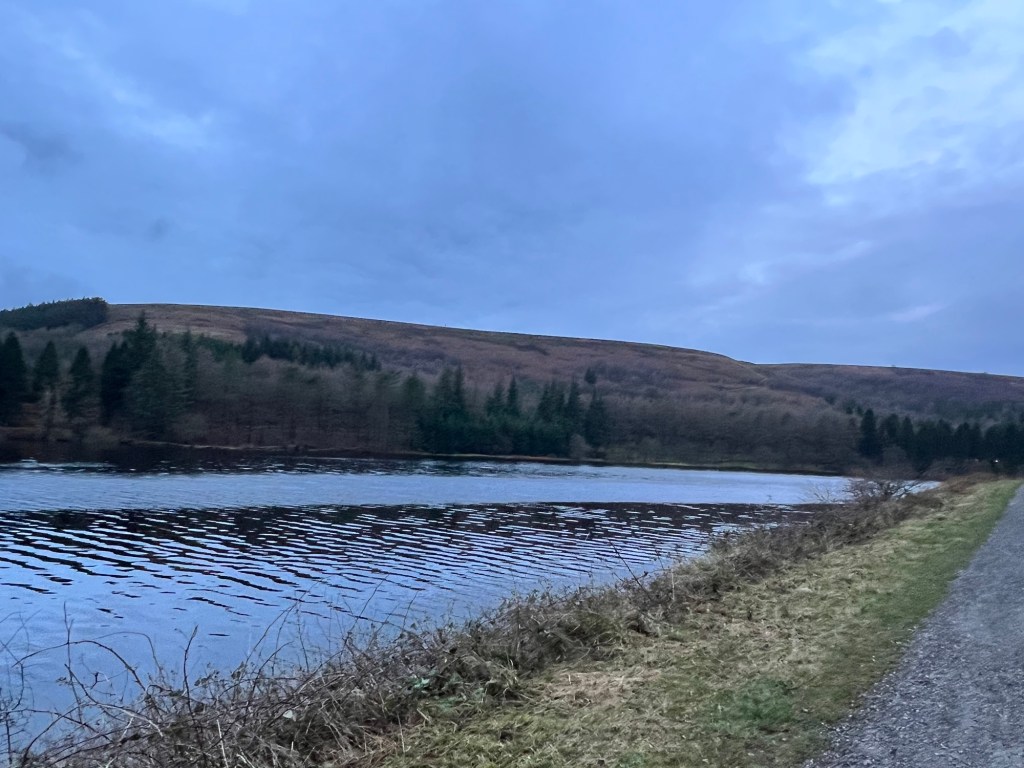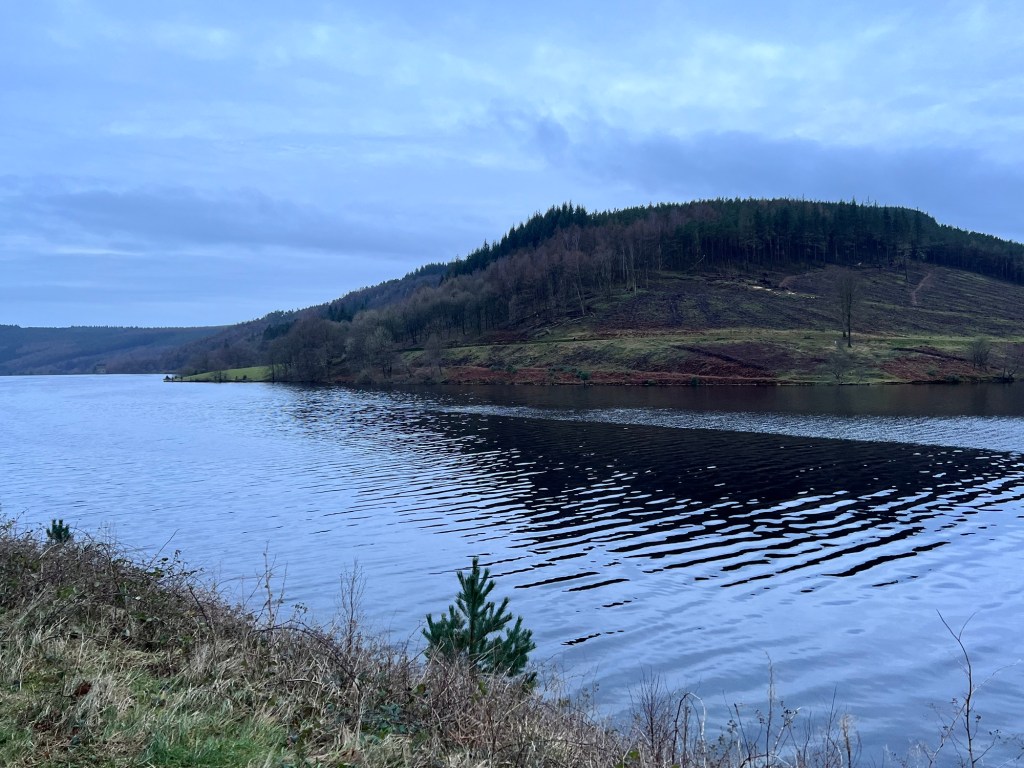
Derbyshire Dales and its many quaint, peaceful and therapeutic offerings. Derwent Dam is a pretty darn beautiful way to kick off 2024 if you ask me!
But first, it’d be rude to ignore the busy outdoor cafe – I haven’t been in the car for over an hour just for the sake of it thankyou very much. A warm sausage bap with ketchup of course, that should keep me happy and content for a little while at least… I left the hangry me back in 2023 haha or that’s what I’d like to think!


When I say the walk was busy, car park was full and clearly this was the place to be on New Year’s Day! Probably to walk off all the hangovers and Christmas food babies is highly likely. I’m only joking! There’s a lovely family atmosphere around as everyone brought their children and made a day of it which made me smile.
Walking towards the dam, I didn’t realise I would get a light shower, if I stood around for a minute longer I’d need my towel and shower gel! But looking past getting sprayed from afar, it was one of the most beautiful scenes I’ve ever seen. The construction, backstory behind the making of such an idyllic structure with immense drama whilst creating calm serenity around all those witnessing. Moments like these make you realise just how special life is and how much beauty there is to observe.
To fully embrace these timeless structures in all their glory, studying the workmanship and hard labour behind what’s facing me today makes the significance all the more while along with the surface level attraction that captivates us all here whether that be today; many years ago of tomorrow. After all, purpose and meaning is endearing…
– At its full capacity the reservoir covers an area of 70.8 ha (175 acres) and at its deepest point is 34.7 m (114 ft) deep.
The Industrial Revolution and urbanisation of the 19th century created huge demand for water in the industrial cities of the East Midlands and South Yorkshire. The proximity of Sheffield and its neighbours to the Upper Derwent valley were thus factors in the decision to dam the valley to create the Howden and Derwent reservoirs.
Construction of the neo-Gothic solid masonry dam began in 1902, a year after the building of Howden commenced, and proved a mammoth task. The chief engineer was Edward Sandeman. He was also in charge of building nearby Howden dam and he was awarded the Telford Medal in 1918 for his work ‘Derwent Valley Waterworks’. The huge stones that formed the walls of the dam were carried along a specially created railway from the quarries at Bole Hill near Grindleford. Over 1,000 workers lived in a specially constructed self-contained town called Birchinlee or “Tin Town”. One of the metal huts was preserved and moved to the village of Hope, where it is now a hairdressing salon. The workers who died during the building of the dam were buried in Bamford Church.
The filling of the reservoir began in November 1914, and overflowed for the first time in January 1916, with the water almost immediately passing into supply. The dam can support a total of 9.64 million cubic metres (340 million cubic feet) of water.
Only two years after the dam’s completion in 1916, it was decided that the flow from the reservoir was insufficient to support the surrounding population. As a result, between 1920 and 1931 the rivers Alport and Ashop were also diverted from the Ashop valley into the reservoir using tunnels and a Venturi flume.
The diversion helped hold back water during the construction of the Ladybower Reservoir to the south, which was constructed between 1935 and 1945. – cited from Wikipedia.
The RAF’s celebrated 617 squadron flew practice sorties here with their ‘bouncing bombs’, in preparation their epic 1943 raid on the dams of the German Ruhr.
History lesson over, making the trip all the more while; or so I thought!
Did you enjoy this post? Have you visited Derwent Reservoir or the Derbyshire Dales? Name your favourite waterfall in the comments section below!





















Sounds like you had fun! Beautiful shots. 😊
LikeLiked by 1 person
One for the books, phenomenal! Aww thankyouu!🤗🤍
LikeLiked by 1 person
Beautiful place. You give so much historical information. Great photos. 🙂
LikeLiked by 1 person
It really is a spectacle! Aww I’m glad you enjoyed this write up and photos, thankyouu so much!!🤗🤍
LikeLiked by 1 person